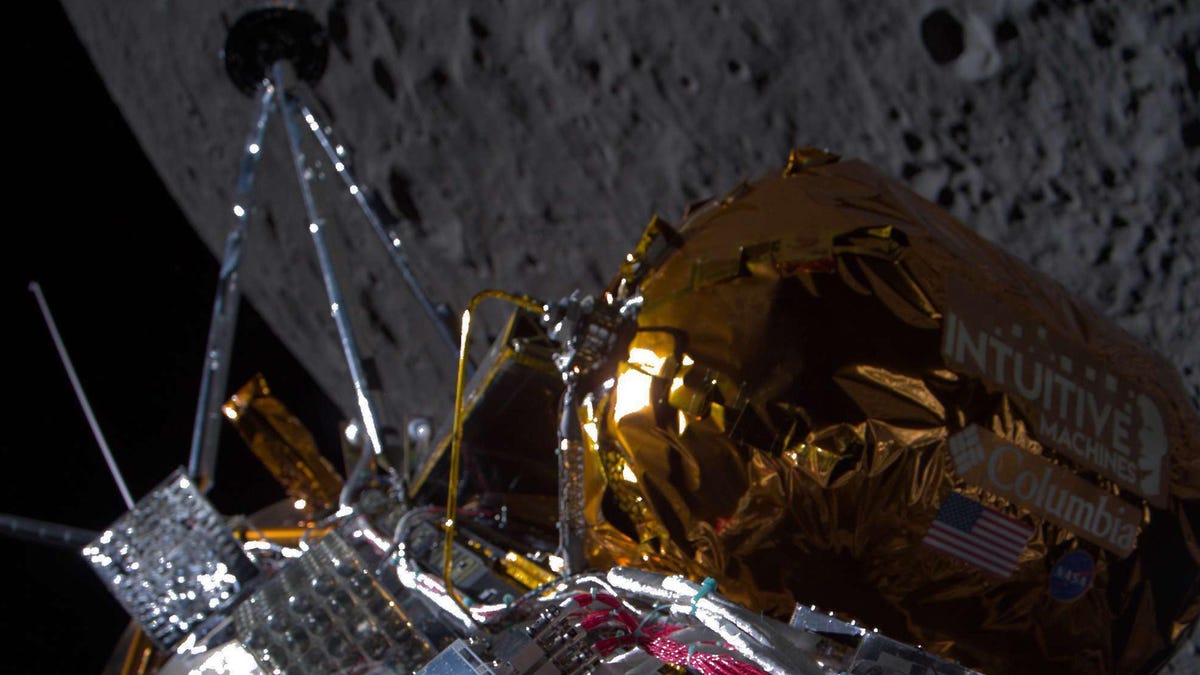Intuitive Machines landed its Odysseus spacecraft on the Moon on Thursday at 6:23 p.m. ET, becoming the first private company to pull off a soft landing on the lunar surface.
China’s Plan to Land Astronauts on the Moon
The IM-1 mission delivered 12 payloads near the Malapert A crater in the Moon’s South Pole region following an eight-day journey through space. The lander was originally scheduled for a touchdown at 4:24 p.m., but flight controllers decided to have it go around the Moon for an additional orbit before starting the landing sequence, to try to resolve an issue with an onboard laser instrument. The laser is designed to assess the Moon’s terrain to identify a safe landing spot. Instead, NASA repurposed a sensor on another onboard instruments to help the lander during its descent.
It was looking tense for a few minutes before Intuitive Machines announced that its lander had safely touched down. “I know this was a nail-biter, but we are on the surface, and we are transmitting,” Intuitive Machines CEO Steve Altemus said during a live webcast. “Welcome to the Moon.”
Odysseus launched on February 15 on board a SpaceX Falcon 9 rocket. The mission is part of NASA’s Commercial Lunar Payload Services (CLPS) initiative, which aims to have a constant flow of landers headed to the Moon to deliver government-owned and commercial payloads. NASA is funding these commercial lunar trips to enable regular cargo delivery services to the Moon, with plans to establish a sustainable presence on its dusty surface.
NASA packed six instruments on Odysseus to study the way landers affect the lunar surface during descents and how space weather interacts with the surface. NASA’s additional items include a radio astronomy tool, precision landing technologies, and a communication and navigation node for upcoming autonomous navigation tests.
The lander is also carrying a camera system designed by students at the Embry-Riddle Aeronautical University, which should have separated from the lander before touchdown to capture the moment of descent. Also on board is a 1.3-pound dual-camera system called ILO-X, which will attempt to collect wide and narrow field images of the Milky Way from the Moon.
Odysseus is designed to operate for around a week, until the Sun sets on the south polar region of the Moon.
With Thursday’s successful landing, Intuitive Machines is the first private company to accomplish the tough feat, following a series of failures by others. In January, Astrobotic failed in its attempt to reach the Moon due to a valve issue with its spacecraft. In April 2023, Japan’s ispace Hakuto-R M1 crashed on the lunar surface, and Israel’s SpaceIL Beresheet lander met a similar fate in April 2019.
The Houston-based company has seemingly broken the lunar curse and initiated a new era for the space economy.
For more spaceflight in your life, follow us on X (formerly Twitter) and bookmark Gizmodo’s dedicated Spaceflight page.
